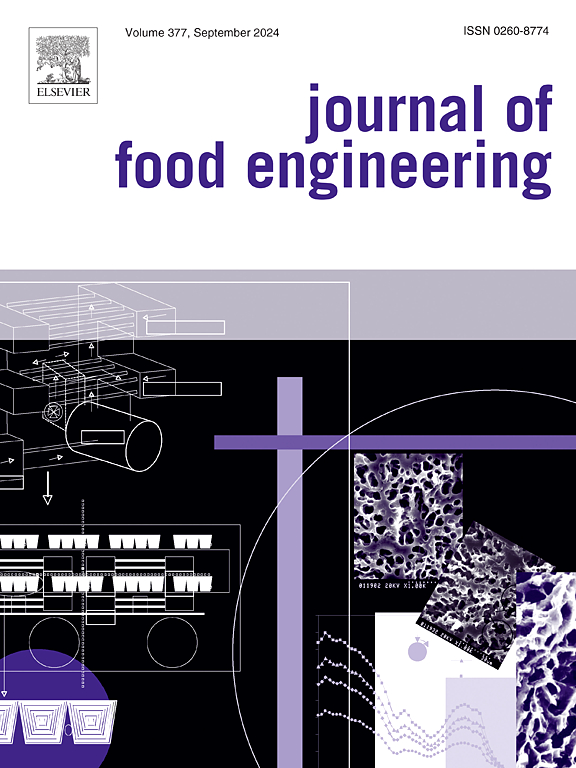Toward a digital twin for beer quality control: development of a digital model integrating industrial process data and model-based fermentation descriptors
IF 5.8
2区 农林科学
Q1 ENGINEERING, CHEMICAL
引用次数: 0
Abstract
Beer production consists of a series of complex chemical, physical, and biological transformations. Although modern industrial production protocols are highly standardized, external and process disturbances often lead to degradation in beer quality. While models are available to predict beer quality, their widespread use is currently limited. Typically, these models rely on input variables from products that are almost complete; therefore, corrective measures cannot be implemented on time. Advanced modeling tools, such as digital twins, are effective alternatives to tackle this limitation, as they can integrate real-time process data into a digital model of the physical system to provide online predictions. To advance the development of such a tool, we have developed a hybrid model for beer quality prediction by combining different modeling frameworks and industrial process data. First, a dynamic model of industrial beer fermentation was calibrated that satisfactorily captured the kinetics of primary (extract) and quality-associated volatile compounds (pentanedione and butanedione). Second, a Naïve Bayes classifier for predicting beer quality was trained using physicochemical variables that identified the most critical attributes in a high-quality beer (ethyl acetate, total esters, foam stability, bitterness, and isoamyl acetate). Lastly, a hybrid regression model was constructed using fermentation model descriptors and external process data to predict the latter attributes with high prediction fidelity (less than 10% relative root mean squared error). The model identified yeast handling—including storage and propagation—and wort preparation as critical determinants of final product quality. Overall, this work represents a step toward developing a digital twin that can provide real-time process descriptors and integrate industrial data to optimize production and enhance beer quality.
面向啤酒质量控制的数字孪生:集成工业过程数据和基于模型的发酵描述符的数字模型的开发
啤酒的生产包括一系列复杂的化学、物理和生物转化。虽然现代工业生产规程是高度标准化的,但外部和工艺干扰往往导致啤酒质量下降。虽然有预测啤酒质量的模型,但它们的广泛应用目前受到限制。通常,这些模型依赖于几乎完成的产品的输入变量;因此,纠正措施无法及时实施。高级建模工具,如数字孪生,是解决这一限制的有效选择,因为它们可以将实时过程数据集成到物理系统的数字模型中,以提供在线预测。为了推进这一工具的开发,我们通过结合不同的建模框架和工业过程数据,开发了一个用于啤酒质量预测的混合模型。首先,校准了工业啤酒发酵的动态模型,该模型令人满意地捕获了初级(提取物)和与质量相关的挥发性化合物(戊二酮和丁二酮)的动力学。其次,使用物理化学变量来训练用于预测啤酒质量的Naïve贝叶斯分类器,这些变量确定了高质量啤酒中最关键的属性(乙酸乙酯、总酯、泡沫稳定性、苦味和乙酸异戊酯)。最后,利用发酵模型描述符和外部过程数据构建混合回归模型,预测后者属性,预测保真度高(相对均方根误差小于10%)。该模型确定酵母处理(包括储存和繁殖)和麦汁制备是最终产品质量的关键决定因素。总的来说,这项工作代表了朝着开发数字孪生迈出的一步,该数字孪生可以提供实时过程描述符并集成工业数据,以优化生产和提高啤酒质量。
本文章由计算机程序翻译,如有差异,请以英文原文为准。
求助全文
约1分钟内获得全文
求助全文
来源期刊

Journal of Food Engineering
工程技术-工程:化工
CiteScore
11.80
自引率
5.50%
发文量
275
审稿时长
24 days
期刊介绍:
The journal publishes original research and review papers on any subject at the interface between food and engineering, particularly those of relevance to industry, including:
Engineering properties of foods, food physics and physical chemistry; processing, measurement, control, packaging, storage and distribution; engineering aspects of the design and production of novel foods and of food service and catering; design and operation of food processes, plant and equipment; economics of food engineering, including the economics of alternative processes.
Accounts of food engineering achievements are of particular value.
 求助内容:
求助内容: 应助结果提醒方式:
应助结果提醒方式:


